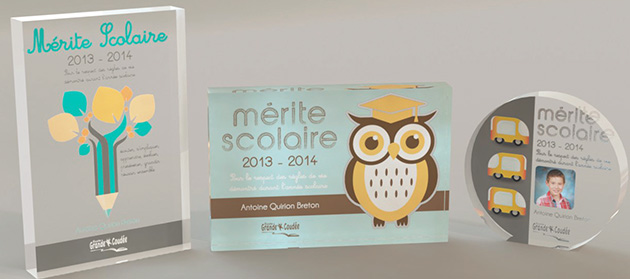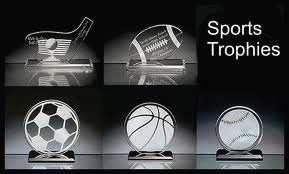Have you ever questioned whether symbolic awards such as trophies, plaques, and framed commemoratives must meet the requirements of the Consumer Product Safety Improvement Act (CPSIA)? This is a question many suppliers and distributors of symbolic awards are asking these days; for this and many other product categories associated with the CPSIA, there are no clear answers. That being said, understanding the Consumer Product Safety Commission’s interpretation of CPSIA rules can help provide a sound basis for making informed decisions when determining whether CPSIA regulations may or may not apply to a symbolic award based on a given situation.
Product Safety
Which Awards Must Meet the Requirements of CPSIA?
By Tim Brown, MAS, Promotional Products Association International (PPAI)
(Originally published in the February 2015 issue of Recognition Review.)
Have you ever questioned whether symbolic awards such as trophies, plaques, and framed commemoratives must meet the requirements of the Consumer Product Safety Improvement Act (CPSIA)? This is a question many suppliers and distributors of symbolic awards are asking these days; for this and many other product categories associated with the CPSIA, there are no clear answers. That being said, understanding the Consumer Product Safety Commission’s interpretation of CPSIA rules can help provide a sound basis for making informed decisions when determining whether CPSIA regulations may or may not apply to a symbolic award based on a given situation.
It first helps to have a basic understanding of the CPSC’s Final Interpretation of a Children’s Product, now codified in 16 CFR 1200 of the CPSIA. This definition of a children’s product states, under section 3(a)(2) of the CPSIA, “a children’s product means a consumer product designed or intended primarily for children 12 years of age or younger. The term ‘designed or intended primarily’ applies to those consumer products mainly for children 12 years old or younger. Whether a product is primarily intended for children 12 years of age or younger is determined by considering the four specified statutory factors. These factors are:
(i) A statement by a manufacturer about the intended use of such product, including a label on such product if such statement is reasonable.
(ii) Whether the product is represented in its packaging, display, promotion, or advertising as appropriate for use by children 12 years of age or younger
(iii) Whether the product is commonly recognized by consumers as being intended for use by a child 12 years of age or younger.
(iv) The Age Determination Guidelines issued by the Commission staff in September 2002 and any successor to such guidelines.
The CPSIA also states, “The determination of whether a product meets the definition of a
children’s product depends on factual information that may be unique to each product and,
therefore, would need to be made on a case-by-case basis."


The use of childlife figures and images that appeal to children are likely to classify these awards—from Pacesetter (left) and BCH Unique (right)
as children’s products.
The factors noted do not indicate an either/or scenario. For instance “a statement by the manufacturer” that a product is not intended for children is not enough by itself to designate that the product is not intended for children. The remaining factors also must be taken into consideration.
In order to effectively use the criteria in determining whether a product could be deemed a children’s product, we must look not only at the foreseeable use but also at the foreseeable misuse of the product by a child.
PRODUCT INTENT AND USE
Most of us, regardless of age, have received a symbolic award at some point. It may have been for winning a spelling bee, winning a league championship, achieving a professional honor, or participating in an activity. Whatever the reason, a symbolic award elicits a feeling of accomplishment—recognition for a job well done.
There is little difference among recipients, regardless of age, when it comes to what ultimately happens with a symbolic award once ceremonies and celebrations are complete.
Ultimately the symbolic award generally will be placed in a position of distinction within a building or home. Once perched in its place of honor, the award will rarely be removed, interacted with, or otherwise handled by the recipient. Many make this case when attempting to make the argument for not classifying symbolic awards as children’s products, even when distributing them to children.
WHAT THE CPSIA SAYS
The CPSC, through the passage of the CPSIA in 2008, established specific criteria for children’s products, articles, and toys. It is diffi cult for anyone to argue with the intent of the CPSIA regulations. However, due to vague definitions and the vast number of products in our society, there have been many misunderstandings and unintended consequences resulting from the passage of this law. The most notable concerns deal with what actually constitutes a children’s product.

When trying to determine if child-safety laws apply to a recognition product, ask yourself if the award in its most basic state appears to be geared toward children or toward adults. The answer will give you a better idea of how to proceed. The trophy photo is courtesy of Pacesetter Awards.
When referring to a toy, the regulations are easier to understand and apply. Simply walk into the toy department of any retail store and the intended audience is fairly obvious. On the other hand, in the awards and recognition industry, just as in the promotional products industry, the intended audience and/or planned use of a product are not always clear. While this is often where things get complicated, it does not necessarily have to be so. With a basic understanding of product safety regulations, solid processes in place, and the application of common sense, product safety compliance is within reach.
With the definition of a children’s product in place, let’s look at how to apply the four specified statutory factors to typical symbolic awards.
- “A statement by a manufacturer about the intended use of such product, including a label on such product if such statement is reasonable.
- The purpose is to demonstrate achievement, and the intended audience covers all age groups.
Therefore, you must determine:
- Who is the intended audience?
- Will the award be distributed to children?
- Where will the award be distributed?
- “Whether the product is represented in its packaging, display, promotion, or advertising as appropriate for use by children 12 years of age or younger.”
- Symbolic awards are represented in a way that typically does not promote or advertise “use” by children based on packaging. However, this can be deceiving as many awards feature a childlike or youthful figure.
- “Whether the product is commonly recognized by consumers as being intended for use by a child 12 years of age or younger.”
- Items such as plaques, medals, ribbons, and
trophies, and plastic, metal, or glass figurines are
intended for all audiences. The target audience
in each situation, along with the design and
the appeal to each specific age group, will be
determining factors when it comes to symbolic
awards. Points to consider:
- Does the figure on the award have childlike
qualities—does it represent a child or an adult?
- Does the award have play value?
- Is the award intended for a youth sports team,
elementary school, or other youth program?
- “The Age Determination Guidelines issued by
the Commission staff in September 2002 and any
successor to such guidelines.”
- Symbolic awards generally have little to no
play value. This alone is not enough to make a
determination with regard to whether a product
is intended for children. The Age Determination
Guidelines will provide useful assistance in making
appropriate decisions with regard to the application
of product safety regulations.


Like promotional products that begin as general use items, these awards are more general in nature which makes it more difficult to make a determination. Many general sports and accolade items would be considered general purpose items unless targeted to children 12 years of age and under. If a plaque was interactive, it would be subject to child-safety guidelines.
APPLYING CPSIA REGULATIONS TO SYMBOLIC
AWARDS
When looking at the criteria and applying responsible
and appropriate filters, it seems possible to say that many
symbolic awards may not meet the CPSIA’s description of
a children’s product. However CPSC staff members have
said they believe trophies cannot be placed categorically
into the general purpose, or nonchildren’s, product
category.
Even though many general-use trophies on the market
do not have attributes or features that appeal to children
or appear youthful in design, a blanket approach to the
category cannot be taken. One would need to “examine
the physical characteristics of the trophy figure (i.e. what
does the figurine’s body actually look like?)” to determine
whether or not an award would be classified as a
children’s product. If a trophy has a childlike appeal, even
if it does not have a child figurine, it is likely to be viewed
as a children’s product.
In order to better understand this concept, use the “four
specified statutory factors” listed previously, and apply
them to the figures provided. Does the award in its most
basic state appear to be geared toward children or toward
adults? When you have your answer, you will have a better
idea of how to proceed.
Like promotional products that begin as general use
items, other awards, such as wall plaques, are more
general in nature which makes it more difficult to make a
determination. Many general sports and accolade items,
such as those shown above, would be considered general
purpose items unless
targeted to children 12 years of age and under. If a plaque was interactive, it would be subject to child-safety guidelines.
Even though symbolic awards are not toys, when children
12 years of age and younger are the target audience,
chances are good that the award will be subject to CPSIA
regulations.
PROP 65 AND OTHER STATE LAWS
In addition to CPSIA, symbolic awards also may be
subject to the laws and regulations of specific states, and
these regulations could apply to all audiences, children
and adults. California Proposition 65, also known as
the Safe Drinking Water and Toxic Enforcement Act
of 1986, lists more than 900 chemicals known by the
state of California to cause cancer, birth defects or
other reproductive harm and to inform citizens about
exposures to such chemicals. Labeling is required if
unacceptable levels of any of these chemicals are present
in a product that will be distributed in California.
In order to distribute products in California, businesses
are required to provide what The Office of Environmental
Health Hazard Assessment (OEHHA) considers a “clear
and reasonable” warning. The purpose is to inform
buyers and/or users of products “before knowingly and
intentionally exposing anyone to a listed chemical.”
These Prop 65 warning labels should be provided by the
“manufacturer, producer, or packager of the consumer
product, rather than by the retail seller.”
Distribution applies to persons or businesses conducting
business in the state of California and can take several
forms, most notably selling the product or handing the
product out at an event or place of business. Whenever
the known distribution point for a consumer product is
California, then compliance with Prop 65 regulations
in the form of testing or labeling is required. Products
purchased or received outside the state of California by
an individual and brought into California for a person’s
own personal use or consumption currently aren’t
subject to these regulations.
When providing “clear and reasonable warning,” a variety
of means to communicate such warnings to the extent
practicable is set forth in the law. These means include
labeling a consumer product with stickers, signs, or
labels, posting signs at a retail environment or workplace,
or distributing a notice in other ways as defined by
the regulation. Warning labels are not required to be
permanently affixed to a product, but they are positioned
in such a way as to meet the definition of a “clear and
reasonable” warning.
By placing a warning label with a product, an
organization is communicating that it “is aware or
believes that one or more listed chemicals is present. By
law, a warning must be given for listed chemicals unless
exposure is low enough to pose no significant risk of cancer
or is significantly below levels observed to cause birth
defects or other reproductive harm.”
The OEHHA has developed “safe harbor numbers”
to assist in determining whether warning labels are
necessary. As a matter of best practice, testing to
determine the presence of any of the listed chemicals is
recommended. As a matter of practicality this is often
not economical or feasible. Therefore, according to the
OEHHA, “a business may choose to provide a warning
simply based on its knowledge, or assumption, about
the presence of a listed chemical without attempting to
evaluate the levels of exposure.”
ILLINOIS LEAD POISONING PREVENTION
ACT
Another state requirement that may be applied
to symbolic awards is the Illinois Lead Poisoning
Prevention Act. This act is, essentially, a labeling
law that applies lead limits (40 parts per million)
to surface coatings and/or painted decoration used
on toys and children’s jewelry. In addition, this act
applies lead limits (600 parts per million) to the
surface coating or substrate material of adult items. If
any of the limits are exceeded, the following warning
label is required: “WARNING: CONTAINS LEAD.
MAY BE HARMFUL IF EATEN OR CHEWED. MAY
GENERATE DUST CONTAINING LEAD.”
Consult your suppliers/manufacturers and testing
labs to determine if your product needs labels to meet
the requirements of this regulation.
SUMMARY
While product safety on a national level as it relates
to symbolic awards has been the primary focus, laws
and regulations are especially fluid at the state level,
adding to the challenge of regulatory compliance.
In addition, myriad factors may affect each given
situation to which the points addressed here may not
specifically apply. When these situations arise, it is
prudent to consult with a qualified testing lab and/or
experienced product responsibility attorney
RESOURCES
DISCLAIMER
This information is provided for educational and informational purposes only. The author makes no warranties
or representations about specific dates, coverage, or application. Consult with appropriate legal counsel about the
specific application of the law to your business and products.
Tim Brown, MAS, is the product
responsibility manager for PPAI, where
he is responsible for product safety,
environmental, and social responsibility
efforts of PPAI, including education
and awareness outreach. Prior to
joining PPAI, Brown worked at
distributor Cintas Promotional
Products, as the supplier relationship
manager where he implemented industry-leading supplier
management best practices. He has served on the Quality
Certification Alliance (QCA) Distributor Advocacy Council and
on the board of directors for the Tri-State Promotional Products
Association (TSPPA) as the 2012 president. He also served as a
member of PPAI’s Product Responsibility Action Group (PRAG).